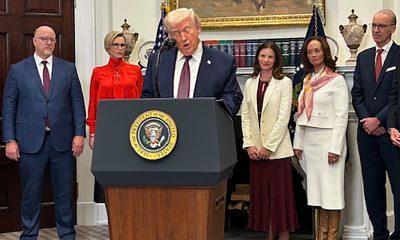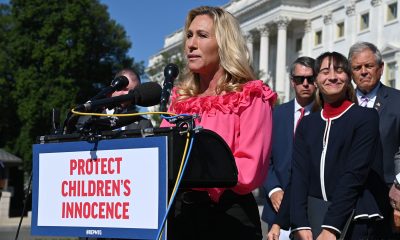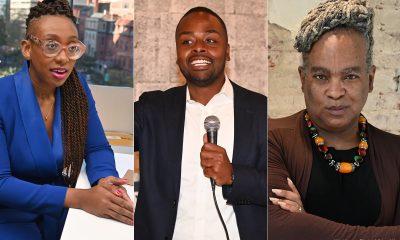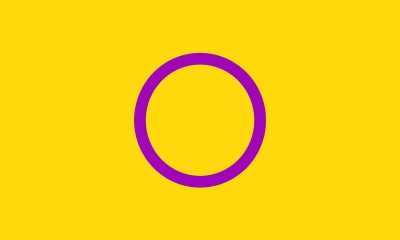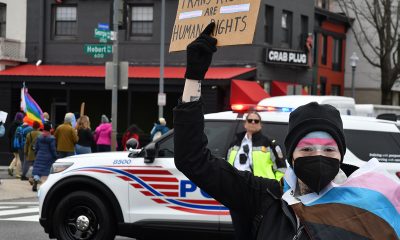Local
D.C. LGBT youth group rebrands itself
Regional GSA network part of SMYAL’s new strategic plan
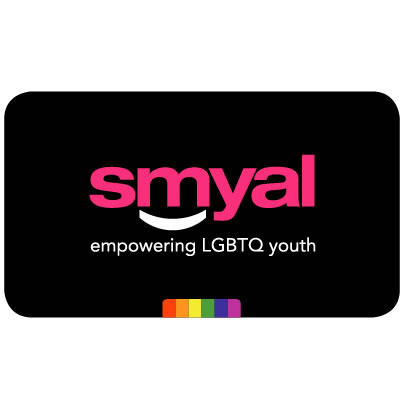
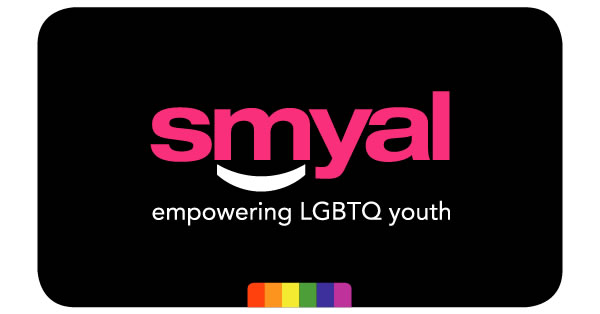
(Image courtesy of SMYAL)
SMYAL on Thursday unveiled a new logo and acronym as part of its ongoing rebranding efforts.
The organization retired the blue, spiky-haired logo affectionately dubbed “Shannon” and replaced it with one that contains SMYAL in magenta print above a rainbow-colored banner and a slogan that reads “empowering LGBTQ youth.”
SMYAL, which had previously stood for Sexual Minority Youth Assistance League, is now Supporting and Mentoring Youth Advocates and Leaders.
SMYAL Executive Director Andrew Barnett told the Washington Blade in an exclusive interview on Tuesday that young people whom the organization serves and local groups with which it works increasingly found the term “sexual minority” out of touch.
“We want a name that when people see it they say ‘oh, this is something that I see myself in,” Barnett said. “The actual spelling out of the acronym was not something that people identify with anymore.”
SMYAL has worked with 7,500 young LGBT people since 1984
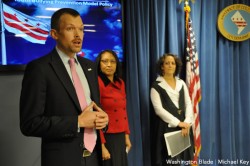
Andrew Barnett, executive director of SMYAL (Washington Blade photo by Michael Key)
A group of advocates and those who work with young people founded SMYAL in 1984 after they organized a conference on LGBT youth issues after they learned cross-dressing students had been admitted to St. Elizabeth’s Hospital in D.C. The organization has subsequently provided direct services to more than 7,500 young LGBT people from the nation’s capital, Prince George’s County in Maryland and other parts of the Washington metropolitan area.
SMYAL in March 2012 adopted a new strategic plan that Barnett said during his organization’s annual Fall Brunch last October would allow it to identify key issues facing LGBT youth and how the organization can most effectively respond to them.
Barnett told the Blade the process of speaking with board members, staffers, clients, funding partners and donors about the new strategic plan began in July 2011. He said SMYAL also sought feedback and suggestions from other community organizations and agencies with which it partners.
“We really wanted to get an accurate and comprehensive picture of SMYAL and LGBTQ youth in the region and what makes sense for us as the next step for our organization,” Barnett said.
Barnett said it quickly became clear SMYAL’s after school programs were providing “really great support for youth.” He added his organization has heard from a lot of young people who said they were interested in attending them.
“At SMYAL we’re providing really great opportunities for youth to engage in social activities with their peers and engage in positive youth development,” Barnett said. “They feel like they’re part of the community [and] ultimately they can grow into happy, healthy and productive adults.”
The average age an LGBT person comes out is 13; but many of them cannot attend SMYAL programs that take place at the organization’s youth center on 7th Street, S.E., near Eastern Market because they are involved with other after-school programs, cannot get to a Metro station or are not ready to come out to their parents.
“We also want to expand our ability to provide programming outside of the four walls of SMYAL,” Barnett said. “We want to bring those safe spaces and opportunities for youth leadership development to other places in our community.”
Barnett further pointed LGBT young people continue to experience disproportionate rates of bullying and harassment in school.
The Gay, Lesbian and Straight Education Network’s 2011 National School Climate Survey reported 81.9 percent of students said their classmates verbally harassed them because of their sexual orientation. Nearly a fifth of them said they were physically assaulted on campus because they are gay.
The GLSEN report also found roughly two-thirds of LGBT students had experienced verbal harassment because of their gender identity and expression — 12.4 percent of them said their classmates physically attacked them at school. Nearly 30 percent of LGBT students said they skipped class at least once because they did not feel safe at school.
GLSEN and other advocates also note LGBT students are more likely to face suspension or other disciplinary actions in school than their straight classmates.
SMYAL launches regional gay-straight alliance network
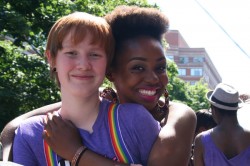
SMYAL youth (Photo courtesy of SMYAL)
One of the ways SMYAL hopes to expand beyond the organization’s drop-in center near Eastern Market is through its D.C. Regional GSA (Gay-Straight Alliance) Network it launched last month.
Working in collaboration with the San Francisco-based Gay-Straight Alliance Network that coordinates more than 900 GSAs throughout California, the SMYAL initiative seeks to support and strengthen the 77 groups in the D.C. metropolitan area. The organization hopes to achieve this goal through an activist camp in August, its annual GSA conference that takes place each fall and trainings with individual clubs and their members at their schools.
SMYAL in 2011 hosted a GSA Network gathering that drew more than 75 young LGBT advocates and GSA sponsors from 20 states. The organization last November also hosted 78 student leaders from across the region at its first GSA conference.
Barnett is also a member of D.C. Public Schools’ LGBTQ Steering Committee.
“We know that GSAs or gay-straight alliances are really effective ways for us to make schools safer for LGBTQ students,” Barnett said.
He added the D.C. Regional GSA Network takes into account the goal set forth in its new strategic plan to expand its programming beyond its youth center.
“We also saw that there was a huge unmet need throughout our region for youth who weren’t able to access programming at SMYAL,” Barnett said. “They didn’t have access to any other programming.”
Barnett said he feels SMYAL’s rebranding efforts will better position it to expand its reach in the D.C. metropolitan area in the years to come.
“It’s a chance for us to take a big step forward in better meeting the needs of LGBT youth throughout the region, which is at the heart of our mission,” he said.
District of Columbia
Reasons to be optimistic about 2026
Local thought leaders offer hope for the New Year
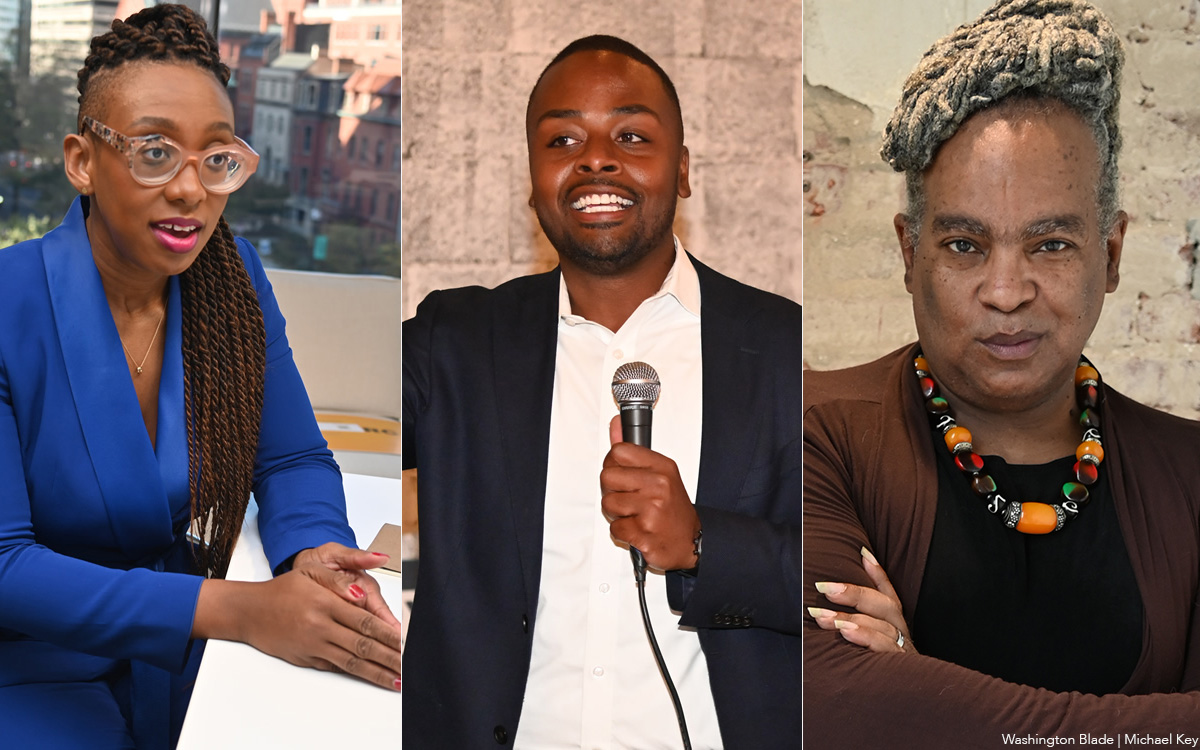
It was a year like no other. It began with Donald Trump’s inauguration in January 2025 and included a takeover of D.C. police, ICE raids, challenges for the local economy, and other events that have many queer Washingtonians ready for 2026.
As we prepare to welcome the New Year, the Blade asked a range of local thought leaders about what makes them optimistic for 2026. Here are their responses.
June Crenshaw
Deputy Director, Capital Pride Alliance
What gives me optimism for 2026 is the way our LGBTQIA2S+ community supports one another – across identities, neighborhoods, and movements – and because we continue to build our collective powers; we demand and create safer, more inclusive spaces.
Zachary Parker
Ward 5 DC. Council member
I’m optimistic about the upcoming elections and the District’s continued fight for local autonomy. One thing I know for sure is that Washingtonians are tough and persistent, and we’re ready to face any challenge as we keep fighting for D.C. statehood.
Sister Jeannine Gramick
Co-founder of LGBTQ supportive New Ways Ministry
As a nun who thinks politically about the Catholic Church, I’m extremely optimistic that Pope Leo XIV will continue to welcome LGBTQ people. At the conclave, most cardinals knew Pope Francis had (then) Cardinal Proost in mind!
Adam Ebbin
Virginia State Senator representing parts of Arlington, Alexandria, and Fairfax Counties
I am excited about 2026 bringing the return of the pro-equality governor to Virginia. I believe that Abigail Spanberger will be a champion for LGBT people and it will also be the year that we can finally pass the necessary legislation to send a constitutional amendment to the voters that would guarantee marriage equality in the Virginia Constitution.
Howard Garrett
President, Capital Stonewall Democrats
In 2026, our community can be optimistic because we’ve proven, again and again, that when we organize, we win: at the ballot box, in the courts, and in our neighborhoods. Even amid challenge, LGBTQ+ Washingtonians and our allies are building stronger coalitions, electing champions, and advancing real protections that make daily life safer and more affirming for everyone.
Paul Kuntzler
D.C. LGBTQ activist since the early 1960s, co-founder of Capital Stonewall Democrats
Last Nov. 4, 11 states held elections and Democrats won almost all of the elections. Next Nov. 3, 2026, Democrats will win control of both the House and Senate …An Economist poll reported that 15 percent to 20 percent of those who voted for Trump no longer support him. The results of the elections of Nov. 3, 2026, will be the beginning of the end of Trump and his racist and criminal regime.
Kelley Robinson
President, Human Rights Campaign
This past year has brought relentless attacks against the LGBTQ+ community, but it has also shown the resiliency of queer folks. While this administration has worked tirelessly to oppress us, we’ve met that oppression with courage. As we step into 2026, my hope is that we carry that energy forward and continue protecting one another, fighting back against injustice, and celebrating queer joy. If 2026 is anything like 2025, we know the challenges will be intense, but our community is more determined than ever to meet hate with resilience, and to turn struggle into strength.
Freddie Lutz
Owner, Freddie’s Beach Bar in Arlington and Rehoboth Beach
I am optimistic that the current president will fulfill his promise to boost the economy. We are all suffering – businesses in D.C. I just read it is 17 to 18 percent down. And I’m hoping the president will boost the economy. I always try to remain optimistic.
Nicholas F. Benton
Owner & Editor, Falls Church News-Press
My optimism stems from my belief in the human capacity and generosity of spirit. Those who are committed to those qualities will find a way.
Richard Rosendall
Former president, D.C. Gay & Lesbian Activists Alliance
MAGA efforts to demonize LGBTQ people are dangerous but will fail overall because understanding and acceptance have grown and endured. The blue wave in November 2026 will show this.
TJ Flavell
Organizer, Go Gay DC
Hope springs eternal. Nurturing your own wellness is vital to the New Year, including enjoying social and cultural activities through such groups as Go Gay DC – Metro DC’s LGBTQ Community. Also, 2026 ushers in a new tax deduction for charitable giving. Check the IRS website for details. You can make a positive impact in the New Year by supporting good charitable causes like the D.C. LGBTQ+ Community Center, a safe, inclusive, and affirming space where all members of our community can thrive.
Rayceen Pendarvis
Leader of Team Rayceen D.C. LGBTQ support organization
I have experienced many trials and tribulations in my lifetime, throughout which my spirit has enabled me to find peace despite the turbulence around me. Being optimistic allows me to be a beacon of light for those who may be lost in the darkness.
Zar
Team Rayceen organizer
My reason for optimism is this: death. Life is a cycle of time, change, and destruction. Everything is impermanent; the time any person rules is finite and eventually all empires end.
DJ Honey
Team Rayceen supporter
Despite the noise, I see 2026 as a year where queer people continue choosing community over isolation. Even when challenged, our culture keeps evolving. We are more visible, more creative and intentional about building spaces that protect each other and center joy without asking permission.
Nick Tsusaki
Owner, Spark Social House, D.C. LGBTQ café and bar
I’m optimistic for 2026 because it feels like the tide is turning and we’re coming together as a community.
District of Columbia
Rush reopens after renewing suspended liquor license
Principal owner says he’s working to resolve payroll issue for unpaid staff
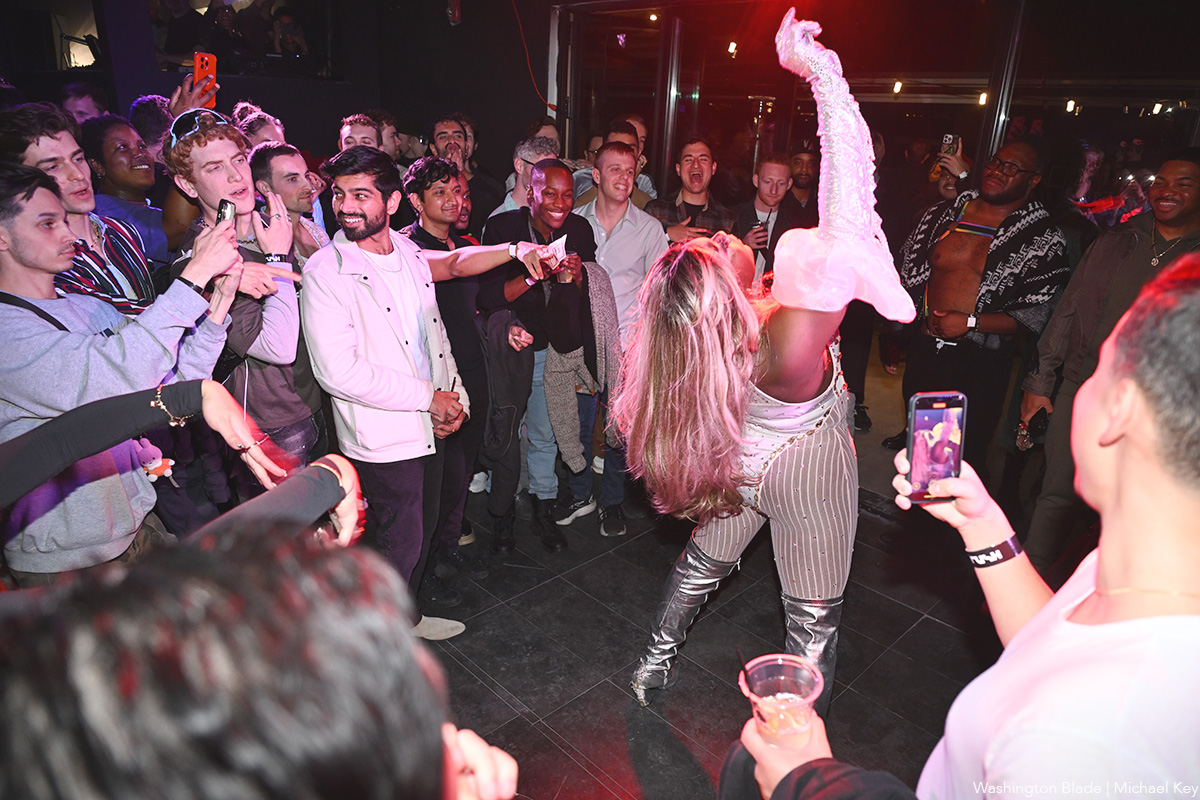
The D.C. LGBTQ bar and nightclub Rush reopened and was serving drinks to customers on Saturday night, Dec. 20, under a renewed liquor license three days after the city’s Alcoholic Beverage and Cannabis Board suspended the license on grounds that Rush failed to pay a required annual licensing fee.
In its Dec. 17 order suspending the Rush liquor license the ABC Board stated the “payment check was returned unpaid and alternative payment was not submitted.”
Jackson Mosley, Rush’s principal owner, says in a statement posted on the Rush website that the check did not “bounce,” as rumors circulating in the community have claimed. He said a decision was made to put a “hold” on the check so that Rush could change its initial decision to submit a payment for the license for three years and instead to pay a lower price for a one-year payment.
“Various fees and fines were added to the amount, making it necessary to replace the stop-payment check in person – a deadline that was Wednesday despite my attempts to delay it due to these circumstances,” Mosley states in his message.
He told the Washington Blade in an interview inside Rush on Saturday night, Dec. 20, that the Alcoholic Beverage and Cannabis Administration (ABCA) quickly processed Rush’s liquor license renewal following his visit to submit a new check.
He also reiterated in the interview some of the details he explained in his Rush website statement regarding a payroll problem that resulted in his employees not being paid for their first month’s work at Rush, which was scheduled to take place Dec. 15 through a direct deposit into the employees’ bank accounts.
Several employees set up a GoFundMe appeal in which they stated they “showed up, worked hard, and were left unpaid after contributing their time, labor, and professional skills to Rush, D.C.’s newest LGBTQ bar.”
In his website statement Mosley says employees were not paid because of a “tax related mismatch between federal and District records,” which, among other things, involves the IRS. He said the IRS was using his former company legal name Green Zebra LLC while D.C. officials are using his current company legal name Rainbow Zebra LLC.
“This discrepancy triggered a compliance hold within our payroll system,” he says in his statement. “The moment I became aware of the issue, I immediately engaged our payroll provider and began working to resolve it,” he wrote.
He added that while he is the founder and CEO of Rush’s parent and management company called Momentux, company investors play a role in making various decisions, and that the investors rather than he control a “syndicated treasury account” that funds and operates the payroll system.
He told the Blade that he and others involved with the company were working hard to resolve the payroll problem as soon as possible.
“Every employee – past or present – will receive the pay they are owed in accordance with D.C. and federal law,” he says in his statement. “That remains my priority.”
In a follow-up text message to the Blade on Sunday night, Dec. 21, Mosley said, “All performers, DJs, etc. have been fully paid.”
He said Rush had 21 employees but “2 were let go for gross misconduct, 2 were let go for misconduct, 1 for moral turpitude, 2 for performance concerns.” He added that all of the remaining 14 employees have returned to work at the time of the reopening on Dec. 20.
Rush held its grand opening on Dec. 5 on the second and third floors of a building at 2001 14th Street, N.W., with its entrance around the corner on U Street next to the existing LGBTQ dance club Bunker.
With at least a half dozen or more LGBTQ bars located within walking distance of Rush in the U Street entertainment corridor, Mosley told the Blade he believes some of the competing LGBTQ bars, which he says believe Rush will take away their customers, may be responsible along with former employees of “rumors” disparaging him and Rush.
Rehoboth Beach
Rehoboth’s Blue Moon is for sale but owners aim to keep it in gay-friendly hands
$4.5 million listing includes real estate; business sold separately
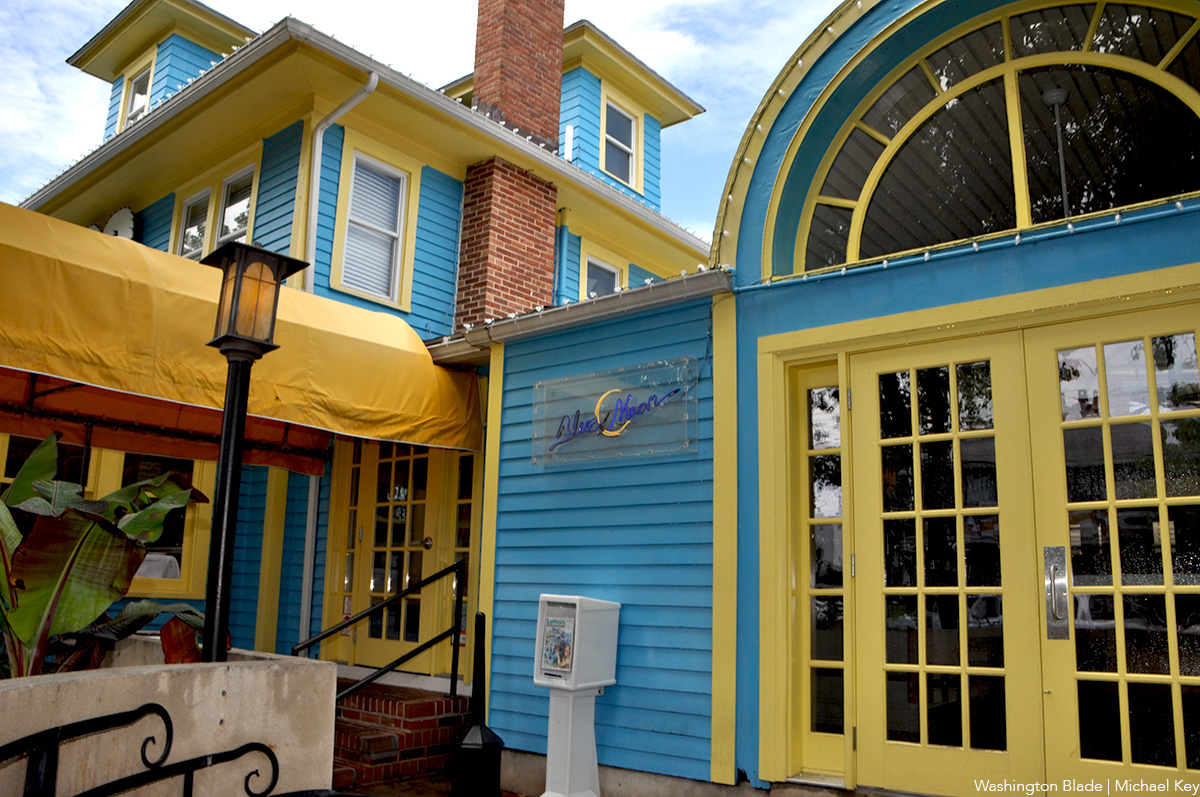
Gay gasps could be heard around the DMV earlier this week when a real estate listing for Rehoboth Beach’s iconic Blue Moon bar and restaurant hit social media.
Take a breath. The Moon is for sale but the longtime owners are not in a hurry and are committed to preserving its legacy as a gay-friendly space.
“We had no idea the interest this would create,” Tim Ragan, one of the owners, told the Blade this week. “I guess I was a little naive about that.”
Ragan explained that he and longtime partner Randy Haney are separating the real estate from the business. The two buildings associated with the sale are listed by Carrie Lingo at 35 Baltimore Ave., and include an apartment, the front restaurant (6,600 square feet with three floors and a basement), and a secondary building (roughly 1,800 square feet on two floors). They are listed for $4.5 million.
The bar and restaurant business is being sold separately; the price has not been publicly disclosed.
But Ragan, who has owned the Moon for 20 years, told the Blade nothing is imminent and that the Moon remains open through the holidays and is scheduled to reopen for the 2026 season on Feb. 10. He has already scheduled some 2026 entertainment.
“It’s time to look for the next people who can continue the history of the Moon and cultivate the next chapter,” Ragan said, noting that he turns 70 next year. “We’re not panicked; we separated the building from the business. Some buyers can’t afford both.”
He said there have been many inquiries and they’ve considered some offers but nothing is firm yet.
Given the Moon’s pioneering role in queering Rehoboth Beach since its debut 44 years ago in 1981, many LGBTQ visitors and residents are concerned about losing such an iconic queer space to redevelopment or chain ownership.
“That’s the No. 1 consideration,” Ragan said, “preserving a commitment to the gay community and honoring its history. The legacy needs to continue.” He added that they are not inclined to sell to one of the local restaurant chains.
You can view the real estate listing here.
-

 District of Columbia3 days ago
District of Columbia3 days agoReasons to be optimistic about 2026
-

 Commentary5 days ago
Commentary5 days agoAmerica is going in the wrong direction for intersex children
-

 Movies3 days ago
Movies3 days agoLong-awaited ‘Pillion’ surpasses the sexy buzz
-

 Commentary4 days ago
Commentary4 days agoProtecting the trans community is not optional for elected allies and candidates



